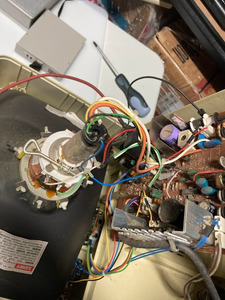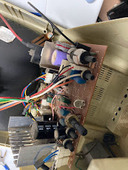First post, by 4xtx
Hi all,
Not too sure what this is - but it was cheap and I was hoping to get it working with one of my many Mono, MDA, Herc cards.
Google-ing the model number makes me think it is a generic mono green phosphur. I've never heard of "Sandy" tubes before either..
It has a non-AU 3 pin power plug which is easy enough to change over and it appears to be 240V/50hz.
First thing I did when it arrived was whip off the back and see if anything was obviously damaged, bulging or infesting (bugs!) - nope, looks mostly unscathed.
Before turning it on I'd like to do some checks, tests but have never really thought about CRT's before.
Can anyone give me some advice on what to look for or test before safely switching this baby on?
I've also tried calling some local "electricians" in my area but not getting anything other than a long pause and sometimes a laugh.. 😀



